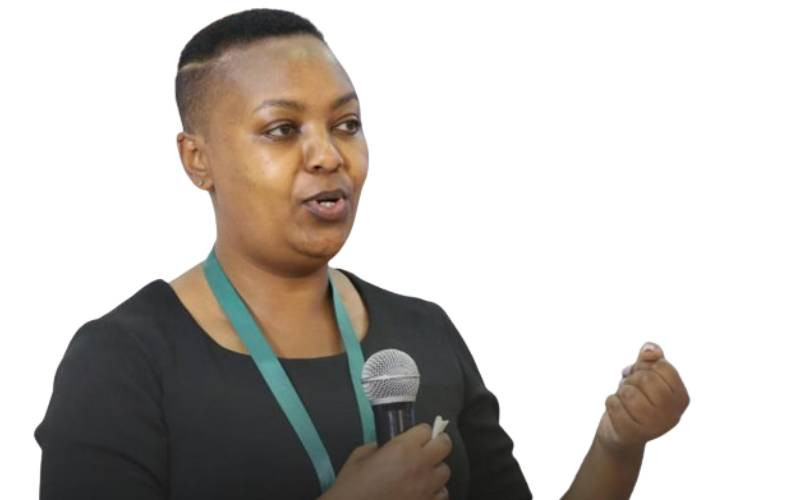
Mwangi Gichuiri, one of the first quantity surveyors in the country, looks back at the days when Nairobi’s Eastlands was nothing more than a sisal jungle, and what attracted him to the field. PETER MUIRURI brings you his exciting story
Construction is a word that has come to define man’s efforts to improve his immediate environment. From primitive caves to the highest skyscrapers, cattle tracks to superhighways, man has made great strides in the realm of the built environment. And while architects have had their fair share of the glory in terms of architectural masterpieces, another group constitutes the unsung heroes of the industry — quantity surveyors
To better understand the role these experts play in the country’s construction sector, I sought audience with Onesimus Mwangi Gichuiri, one of the pioneering quantity surveyors in the country.
Having been in practice for 44 years, 70 year-old Gichuiri has seen the sector grow from humble beginnings to become one of the most vibrant today. And with two daughters who are also quantity surveyors, a son working as an engineer in the UK and a brother who is an architect, there was no better place to start.
His modest office on 13 Westlands Road is well adorned. On the walls are portraits of the four presidents Kenya has had. The last in the sequence is his own portrait. “Maybe I will be the next, you never know…” he says with a chuckle. Professional and academic papers are well framed, too. This is understandable for a man who is a member of almost every professional body in the built environment sector. There is also a Kanu life membership certificate.
Then there are comic strips and sketches from his grandchildren: “Some of these are pinned here by my staff who consider them funny.” In the midst of all the humour, I pop the question: “How does one become a quantity surveyor?”
“Everyone is born a builder or a quantity surveyor.” He notices the surprise look on my face. “How?” I ask.
“Remember the toy cars you made out of mud or wood? Did your teacher ever tell you to come to school with a piece of wood to shape into a cooking stick? Did you ever heat and flatten a six-inch nail and then flatten it to make a chisel? Well, quantity surveying and building economics only enlarge such principles. We are not reinventing the wheel. We are just making it move faster.”
He goes further: “What is the first question you ask when a friend says he is visiting you? Are you not eager to know whether he will come alone or with others? You also need to know the types of food they eat. All this help you to calculate the needed quantities with a measure of accuracy to curb wastage.”
Project management
And that has been his role over the years – advising clients on proper project management. He has lost count on the number of projects he has worked on both in the public and private sectors. Some, like the new Teleposta Towers on Kenyatta Avenue, stand out.
“I had advised the government to move the tower to another location and preserve the old GPO building but lost the argument. We should not bury our unique building inside the maze of modern towers. Kipande House and Old PC’s office stand out as unique entities,” he says.
Gichuiri may have a way of explaining such complex concepts with simplicity but his journey to the top of the cream in the industry was not easy.
In 1966, Gichuiri saw an advertisement in The Standard newspaper from a construction firm that required the services of a quantity surveyor. It was a game changer in his quest for a career in the built environment. “The thought that there was a profession in the built environment that would earn one Sh4,000 then was startling. My mind was made up. I had to pursue the ‘new’ career no matter what it took,” says Gichuiri.
Stay informed. Subscribe to our newsletter
But there was a small problem. During his days as a student in Kagumo High School between 1961-64 and later Kangaru School for his “A” levels, there was nothing in the local curriculum known as quantity surveying. In fact, all he ever hoped to be was a civil engineer.
Back then, those who desired to study at the university had to be admitted through Makerere under the auspices of the then University of East Africa, which had been established in 1963 as an external college of the University of London. It had the Nairobi University College, Makerere and University of Dar es Salaam as constituent colleges before these became fully fledged universities in early 1970s. Gichuiri graduated with a Bachelor of Arts in Building Economics in 1970, setting the stage for a lifelong career in quantity surveying.
Unlike the case today, Gichuiri did not have to ‘tarmac’ for long. The young country was in dire need of professionals in the sector to help realise the people’s expectations. He got a job the same day he cleared his exams. “I finished my final paper at 11:30 in the morning and then walked from Nairobi University to the Ministry of Works offices in Community area and got hired together with three other college mates. I was actually paid my wages for the day,” he says.
Many top jobs were then in the hands of whites, some who may have resented the entry of locals into the ‘privileged’ profession. But Gichuiri found allies too. Among these was David Mutiso, the then chief architect at the ministry. Mutiso is best remembered for his role in designing the iconic KICC building for the then Kanu government.
“It was great working with Mutiso. He was a meticulous professional who had no time for lazy people,” he says. The two regularly meet in golfing sessions.
Gichuiri has seen the effects of rapid urbanisation, especially in the capital city. He vividly recalls the bleak landscape in most of Nairobi when he joined the profession. According to him, much of what we call Eastlands — Buruburu, Umoja, Kayole all the way to the airport — was nothing more than a sisal jungle.
The jungle may be gone but some of the current developments within the city are no good either owing to what he terms “lack of strict discipline” within the profession. “Attitude is going down. Social ethics too are on a steep decline. As long as one gets the job, the rest does not matter.”
To Gichuiri, reforming the educational system as far as training the professionals is concerned holds the key to transforming the sector. He says we may be relying too much on technology but that can never replace the human brain.
What is the future of the profession? “As long as there are people on earth, we shall always have experts in the built environment.”
 The Standard Group Plc is a
multi-media organization with investments in media platforms spanning newspaper
print operations, television, radio broadcasting, digital and online services. The
Standard Group is recognized as a leading multi-media house in Kenya with a key
influence in matters of national and international interest.
The Standard Group Plc is a
multi-media organization with investments in media platforms spanning newspaper
print operations, television, radio broadcasting, digital and online services. The
Standard Group is recognized as a leading multi-media house in Kenya with a key
influence in matters of national and international interest.
 The Standard Group Plc is a
multi-media organization with investments in media platforms spanning newspaper
print operations, television, radio broadcasting, digital and online services. The
Standard Group is recognized as a leading multi-media house in Kenya with a key
influence in matters of national and international interest.
The Standard Group Plc is a
multi-media organization with investments in media platforms spanning newspaper
print operations, television, radio broadcasting, digital and online services. The
Standard Group is recognized as a leading multi-media house in Kenya with a key
influence in matters of national and international interest.









